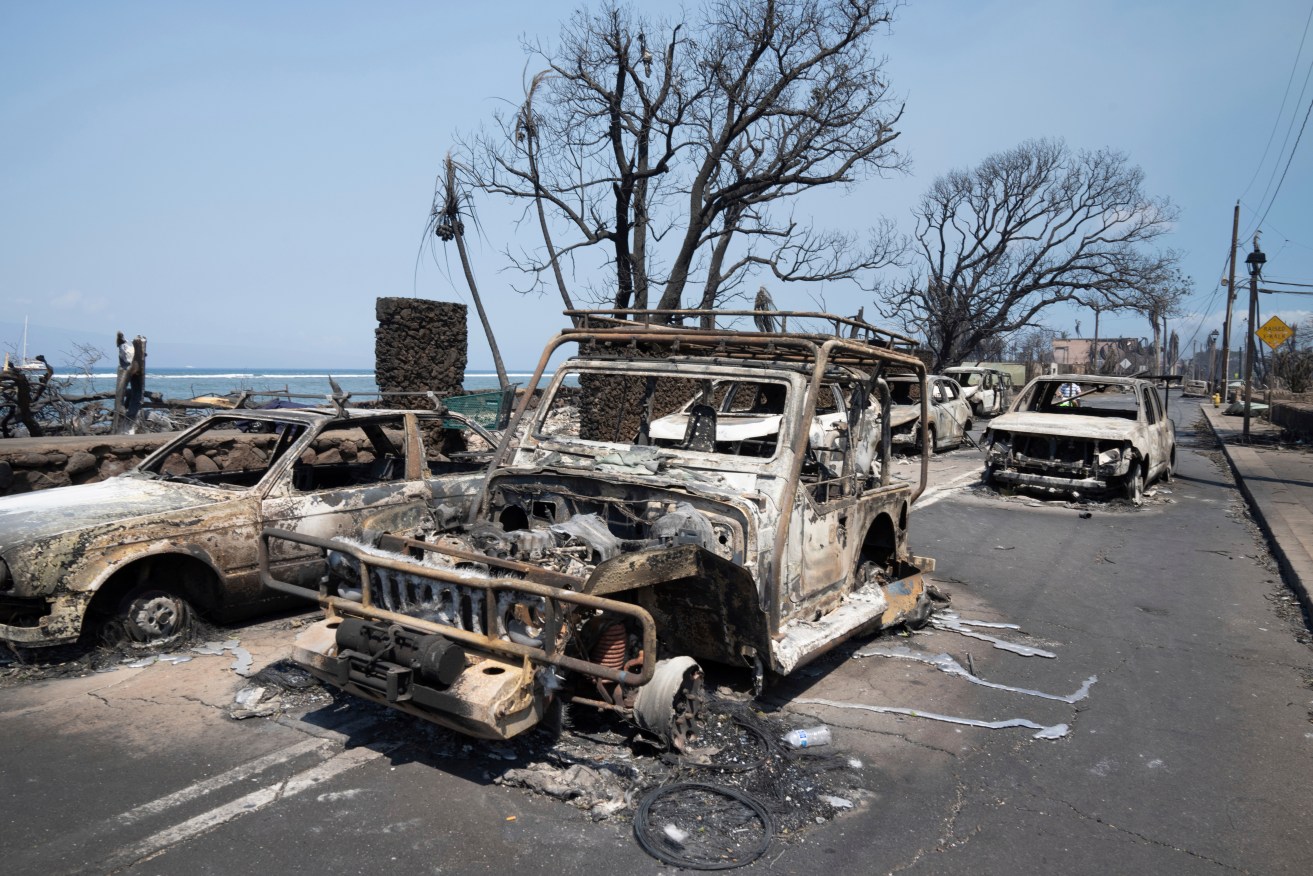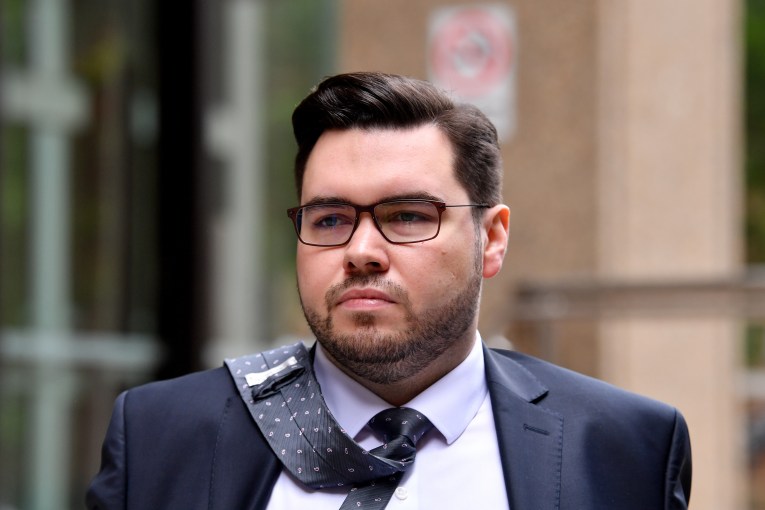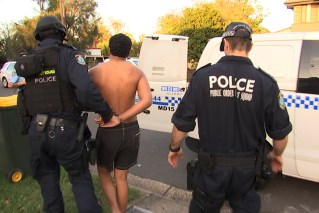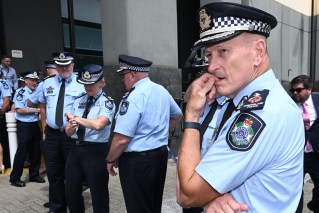They died in the streets and they died in the surf: Hawaii ‘s wildfire apocalypse toll hits 53
The death toll from a wildfire that has turned the resort town of Lahaina on Hawaii’s Maui island into smouldering ruins has risen to 53.

Wildfire wreckage is seen Wednesday, Aug. 9, 2023, in Lahaina, Hawaii. The scene at one of Maui's tourist hubs on Thursday looked like a wasteland, with homes and entire blocks reduced to ashes as firefighters as firefighters battled the deadliest blaze in the U.S. in recent years. (Tiffany Kidder Winn via AP)
At least three major fires broke out on Maui on Tuesday night, cutting off the western side of the island and the historic city of Lahaina, where at least 271 structures were destroyed or damaged.
Many more people suffered burns, smoke inhalation and other injuries. Search and rescue efforts continue, and thousands of people have fled the area, into emergency shelters and off the island.
“As firefighting efforts continue, 17 additional fatalities have been confirmed today amid the active Lahaina fire. This brings the death toll to 53 people,” Maui County said in a statement on Thursday.
The fires reduced entire neighbourhoods to ashes on the western side of the US island.
Lahaina is one of Maui’s prime attractions, drawing two million tourists to the island each year, or about 80 per cent of the island’s visitors.
The wildfires took most of Lahaina’s residents and visitors by surprise when they broke out, forcing some to jump into the ocean to escape the fast-moving inferno.
Nicoangelo Knickerbocker, a 21-year-old resident of Lahaina, had just awoken from a nap on Tuesday evening when he saw the fires burning through his hometown.
His mother and sister fled, while he and some and friends went to neighbours’ houses, helping people pack belongings and fruitlessly trying to stem the flames with garden hoses.
“It was so hot all around me, I felt like my shirt was about to catch on fire,” he said from one of the four emergency shelters opened on the island. The shelters are housing more than 2100 people.
Knickerbocker heard cars and a petrol station explode, and soon after fled the town with his father, bringing with them only the clothes they were wearing and the family dog.
“It sounded like a war was going on,” he said.
At least 20 people suffered serious burns, and several were airlifted to Oahu for medical treatment, while more than 11,000 visitors were evacuated from Maui, Ed Sniffen of the Hawaii Department of Transportation said late on Wednesday.
Though at least 16 roads were closed, the airport was operating fully, he said.
The fires were the worst disaster to befall Hawaii since 1960, one year after it became a US state, when a tsunami killed 61 people.
The fate of some of Lahaina’s cultural treasures remains unclear.
The historic 18-metre-tall banyan tree marking the spot where Hawaiian King Kamehameha III’s 19th-century palace stood was still standing, though some of its boughs appeared charred.
US President Joe Biden has approved a disaster declaration for Hawaii, allowing affected individuals and business owners to apply for federal housing and economic recovery grants.
The cause of the Maui wildfires has yet to be determined, officials said, but the National Weather Service said dry vegetation, strong winds, and low humidity fuelled them.
Elsewhere on the island, fires also destroyed parts of Kula, a residential area in the inland Upcountry region, and Kihei in South Maui.
Scenes of fiery devastation have become all too familiar elsewhere in the world this summer.
Wildfires, often caused by record-setting heat, forced the evacuation of tens of thousands of people in Greece, Spain, Portugal and other parts of Europe.
In western Canada, a series of unusually severe fires sent clouds of smoke over vast swaths of the US, polluting the air.
Human-caused climate change, driven by fossil fuel use, is increasing the frequency and intensity of such extreme weather events, scientists say.












